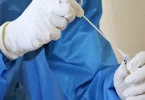Getting a scoop on the latest branch-stacking scandal in Victoria last year resulted in the broadcast of taped conversations from junior Labor staffers and volunteers.
But instead of the focus of the public outrage being on the actual corruption, much of the news discussion of this latest scandal was about how the leak occurred, and how the reporters got the drop.
This is because what happens in the backrooms of Australian political life often remains out of sight.
The relationship between reporters and politicians is an important part of the production of news, and acknowledged by the parliament as vital to democratic communications.
But reporters know that developing a relationship with politicians is vital to getting the story and serving the public interest.
“It’s about playing a longer game,” an unnamed political reporter said of building a rapport with politicians and their staffers.
“There’s an army of spin doctors who are trying to water everything down and make it suit an agenda.”
That journalist, who only spoke on the proviso of anonymity, said that building trust and getting to know contacts on a personal level was vital in political journalism.
However, reporters still needed to keep in mind that a crucial part of the job was holding politicians to account.
“Just because you may have had a beer with them and talked about politics and life, it doesn’t mean that (journalists) are some sort of protection racket,” the journalist said.
High-profile journalist and Professor Peter van Onselen recently found himself facing public criticism about his allegiances, after an explosive column in The Australian in which he discussed allegations against Attorney General Christian Porter, although he is on the record as being a long-time friend of Mr Porter.
In a 2015 study, an analysis of the relationship between politicians, journalists and media advisors found that Australian governments were good at instigating stories which were designed to distract from other more negative reports.
NSW One Nation leader Mark Latham was recently revealed to have a large influence in stories featured in the Daily Telegraph.
Another major change to the relationship between journalists and politicians is the use of smart phone technology which allows political leaders to talk directly to the public without being mediated by questions from reporters.
However, these live streams can also act as a vital resource for journalists and politicians during elections and other major events such as bushfires and pandemics.
Prominent political journalist Michelle Grattan outlined in 1998 the connection between political life and the news media in Australia saying that there was “sophisticated levels of media management by governments”.
“Spin can encourage lazy journalism and distorted journalism,” she wrote.
One of the biggest stories of 2021 has been the allegations of misogyny and sexual assault within Federal Parliament that was not immediately reported by the politicians journalists but broken by Channel 10’s Lisa Wilkinson.

Recent scandals in Canberra have put government transparency into question – By Heath Doman via Shutterstock.
In her new novel Sex, Lies and Question Time, former MP Kate Ellis wrote about the gossip she heard in parliament as “significant and life-altering lies” that did not make into the public arena.
Gossip is traded between politicians and many journalists regard political gossip as a crucial currency when building and maintaining contacts.
Freelance political journalist Marie Le Conte said in a speech to the Reuters Institute that the intimate relationships between journalists and politicians were important because they helped journalists gather more insightful stories and would better inform the public.
[Feature Image: By Alex Tsuper via ShutterStock]







